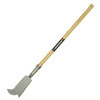Fascinating pictorial in the UK Telegraph showing what an average (Brit) soldier carried over the past ~1000 years during important battles/wars, from the Battle Hastings 1066, the Crusades, Agincourt, War of the Roses, Waterloo, WWI, WWII to modern day Afghanistan.
http://www.telegraph.co.uk/history/...iers-kit-from-1066-to-2014.html?frame=2994181
http://www.telegraph.co.uk/history/...iers-kit-from-1066-to-2014.html?frame=2994181









